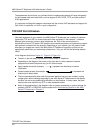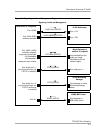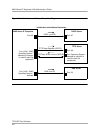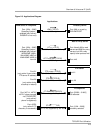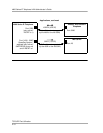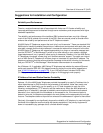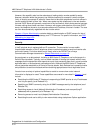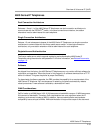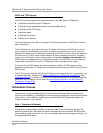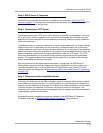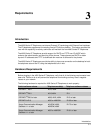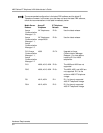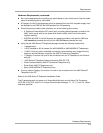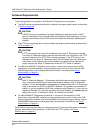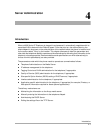
4600 Series IP Telephone LAN Administrator’s Guide
Initialization Process
2-14
DHCP and TFTP Servers 2
The DHCP server provides the following information to the 4600 Series IP Telephone:
■ IP Address of the 4600 Series IP Telephone
■ IP Address of the Gatekeeper board on the Avaya Media Server.
■ IP Address of the TFTP server
■ The subnet mask
■ IP Address of the router
■ DNS Server IP Address
You should administer the LAN so that every IP Telephone can access a DHCP server with the
above information.
The IP Telephone will not function without an IP address. The failure of a DHCP server at boot
time will leave all the affected voice terminals unusable. It is possible for the user to manually
assign an IP address to an IP Telephone, but when the DHCP server finally returns, the telephone
will never look for a DHCP server unless the static IP data is unassigned manually. In addition,
manual entry of IP data is an error-prone process. It is therefore strongly recommended that a
DHCP server be available when the IP Telephone reboots. If a DHCP server is not available at
remote sites during WAN failures, the IP Telephone will be unavailable after a reboot.
A minimum of two DHCP servers are recommended for reliability. A DHCP server must be
available at remote sites if IP Telephones are isolated from the central site DHCP server(s) due to
WAN failures.
The TFTP server provides the 4600 Series IP Telephone with a script file and, if appropriate, new
or updated application software (see Step 3: Telephone and TFTP Server, on page 2-15
under
Initialization Process
). In addition, you can edit an associated settings file to customize telephone
parameters for your specific environment (see Administering Options for the 4600 Series IP
Telephones, on page 4-30).
Initialization Process 2
The following is a high-level description of the information exchanged when the telephone is
initializing and registering. This description, which assumes all equipment is properly administered
ahead of time, may be helpful in explaining how the 4600 Series IP Telephones relate to the
routers and servers in your network.
Step 1: Telephone to Network 2
The telephone is appropriately installed and powered. After a short initialization process, the
telephone identifies the LAN speed and sends a message out into the network, identifying itself
and requesting further information. A router in the network receives this message and relays it to
the appropriate DHCP server.



